They’re like that in this apartment we’re renting and I keep seeing them elsewhere. I don’t get it.
the UK power grid is weird. mostly due to echoes of the war. used to be that, to save copper, the entire house and sometimes multiple houses on a street would be wired as one big loop of wire, no fuse box or anything. that’s where the individually fused plugs and switched sockets come from. then, since it turned out to be quite a good idea for safety, they kept doing it.
This is the answer. When all sockets are connected to one big loop, there’s fuses in each socket to prevent a device from screwing with the whole system.
This isn’t strictly true. Most houses built between WWII and the '90s were built with sockets that didn’t have switches on them. It was only later safety regulations / suggestions that made the switches preferable.
Where I live was built in the late '80s right before switched sockets became more common. All the original sockets have no switch. Some in the kitchen have switches, but it’s clear these were added at a later date.
I’m not sure of the exact rulings and where and when a socket must have a switch, but you can still find switchless sockets for sale at the sorts of retailers who sell those sorts of things, so there are definitely places where those sockets are still allowed.
The old Ring Circuit
eastern block solution to copper shortages was to wire houses with aluminum instead of copper. this avoided all that bizarre bullshit that brits do, and in principle it’s a good idea since aluminum is used for big time power distribution as well. this worked pretty well until it was noticed that under some conditions hot spots can form on connections over time, requiring replacement of connectors. it’s still legal to use aluminum wires in some places, but copper is more common now
So that switch will trip like a breaker?
No - there’s fuses in the plugs themselves, the switch is largely for convenience and safety - if you want to unplug something broken and potentially live, it’s much safer to switch it off at the wall than risk a shock given the current limit is on the breaker is so high
Are folks able to replace the fuses without exposing live parts? I totally get the safety angle.
fuse is in plug and accessible only when plug is disconnected
it’s also a very weird thing because fuses are supposed to protect what is downstream of them. so effectively fuse in plug protects cord and appliance only, not the wires in the wall. there’s breaker box for this
Whoa. Thanks all!
It is safer for the fuse to be in the plug for those people who think they are electricians and end up causing house fires or bzzzt’ing themselves
i understand that it’s remnant from times when fusebox wasn’t a thing and it was an attempt at protecting ring circuit, that’s all. it makes little sense
The screw to get to it is supposed to be on the side that would be facing the wall when plugged in so no
Where I live we would just turn off the breaker for that part of the house
When I bought the apartment I’m living in, the previous owner had refused all modernisation, even legal ones (he had mental problems), so the appartment had the original 1 hot wire going everywhere, you just “tapped” off power where you wanted to to ground. 1959 era.
Why are people saying this?
I’ve lived in multiple UK houses and never once seen a socket with a fuse. Are you saying this was change way way back in the day?
All houses have fuse boxes (which then got upgraded to circuit breakers). Not one fuses in sockets. Would be a fucking nightmare to take the socket off and change a fuse.
The fuse is actually in the UK plug (the big brick-like thing with the wire on it), not the socket. But yes, it’s a thing, and most of the rest of the world considers it overkill. Also a lot of cheap junky equipment (ironically the stuff where you’d most want the fuse) omits the fuse in the plug, go figure.
Yea I know, I’ve wired a plug.
Never seen a fuse in a socket though. That comment is completely wrong and yet it’s the most up voted reply.
Never seen a house without a fuse box either.
No fuses in the switch box though, it’s a box of circuits breakers
Yea I know, I said that.
People still call them fuse boxes though.
I am not sure if I mispoke or misread. Apologies for implying ignorance, I just wanted to dump my mind
Didn’t the uk used to have appliances without plugs that you’d need to wire yourself If inrecalling that Tom Scott video correctly
Yes. I believe that’s true but I’ve never done it myself.
sloppy wording, i meant “switched sockets and fused plugs”.
Sorry but I’m going to need a source on that because there is no evidence of that being the reason UK plug sockets have switches
Other countries have switches on their sockets, Australia being one because I live here
Switches on sockets do make a ton on sense though for safety reasons for example if you need to quickly isolate electricity from the switch and the breaker hasn’t done anything
Switches also prevent arcing when you pull out a plug if an appliance doesn’t have an off switch and you can switch something off that you use commonly say a kettle but don’t unplug because you use it commonly so theirs less chance of an electrical fault happening while no one is there and its also the same reason I’ll demand an isolation switch be installed on electric stoves just incase the dail on the stove fails and the stove turns on
looking for a source is not hard. anyone can do it.
switches are not required by the bs1363 standard. the provision for them only arrived in the 1960s. there.
Allows you to remove power from the plugged in device without unplugging it. This provides convenience to easily and quickly turn things on and off and prevents arcing when unplugging. 240V 13A can arc a bit, particularly if unplugged under load, or on older sockets where the contacts have worn. While a little arcing doesn’t do much damage immediately, over time it will cause pitting and make a high resistance joint that will generate heat.
The switch only disconnects the live terminal, but the neutral terminal should be similar potential to earth (depending on how the building is wired).
Truly the king of plugs and sockets. The plugs are individually fused according to the device needs, ergonomic to use and exciting to stand on.
Allows you to remove power from the plugged in device without unplugging it. This provides convenience to easily and quickly turn things on and off and prevents arcing when unplugging.
That’s exactly what I do, because it’s more convenient than unplugging everything.
I live in South Africa, where we had rolling blackouts (called loadshedding) for a few years. It’s easier to switch everything back on when the power comes back than to plug it back into a socket without a switch, especially with my fucked up spine.
The electricity in the place I live was done poorly, so having something plugged in “live” risks a surge or something and then the appliance gets fucked and then everything smells like burnt plastic.
And that’s the best case scenario. Others have had housefires.
Also, the South African plugs aren’t pleasant accidentally to step on. It won’t pierce your foot, but it can still hurt like a motherfucker for a few seconds if you step on it in the wrong way.
Those UK plugs do look a lot more nasty to step on. I shudder at the thought.
I like the EU and US two prong cables ( 🔌?) where the prongs are parallel to the cable, but not the cables with the orthogonal prongs.
I like the EU and US two prong cables ( 🔌?) where the prongs are parallel to the cable, but not the cables with the orthogonal prongs.
Non-grounded plugs aren’t that great, though, and once you add the third prong the plug gets much less flat. Compare:
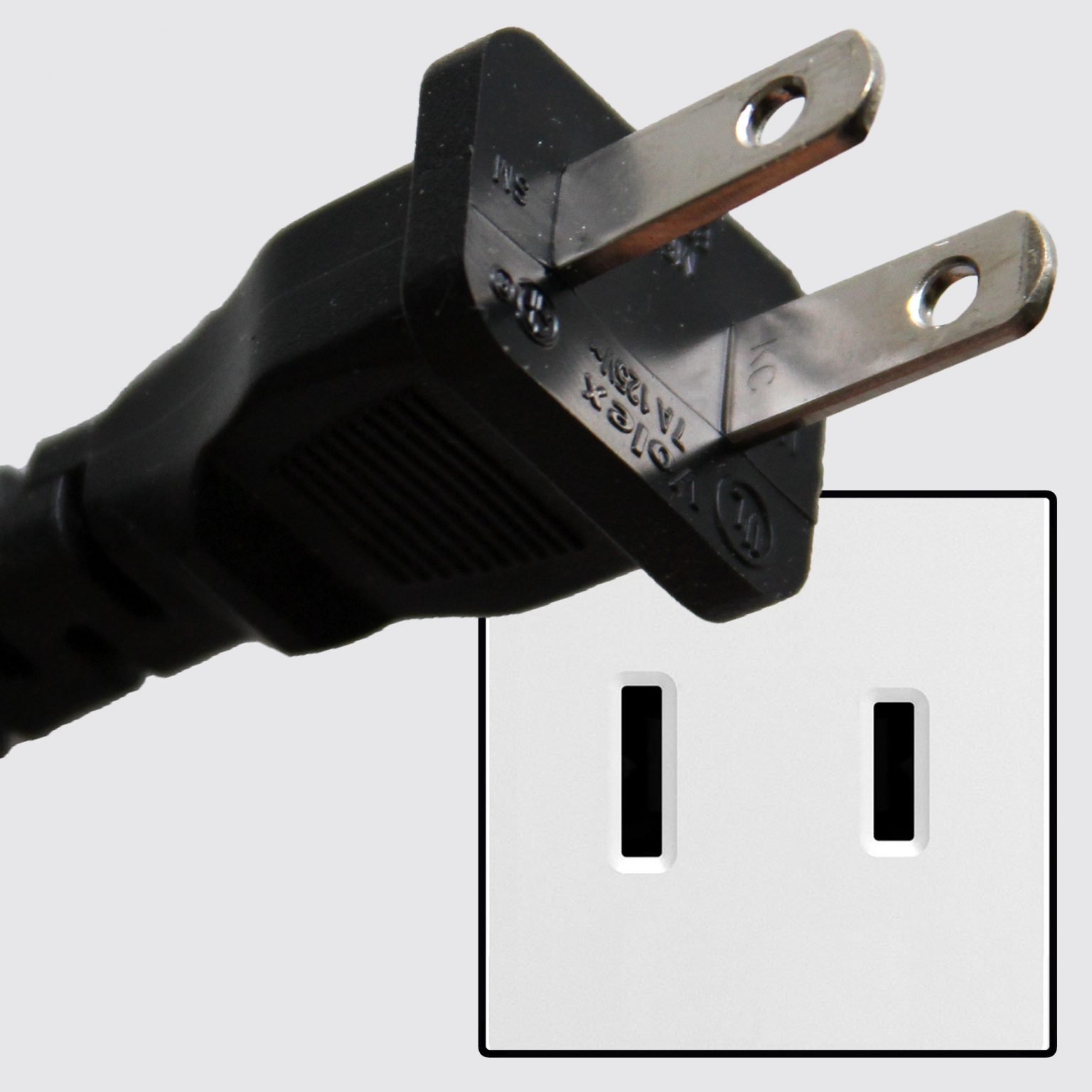
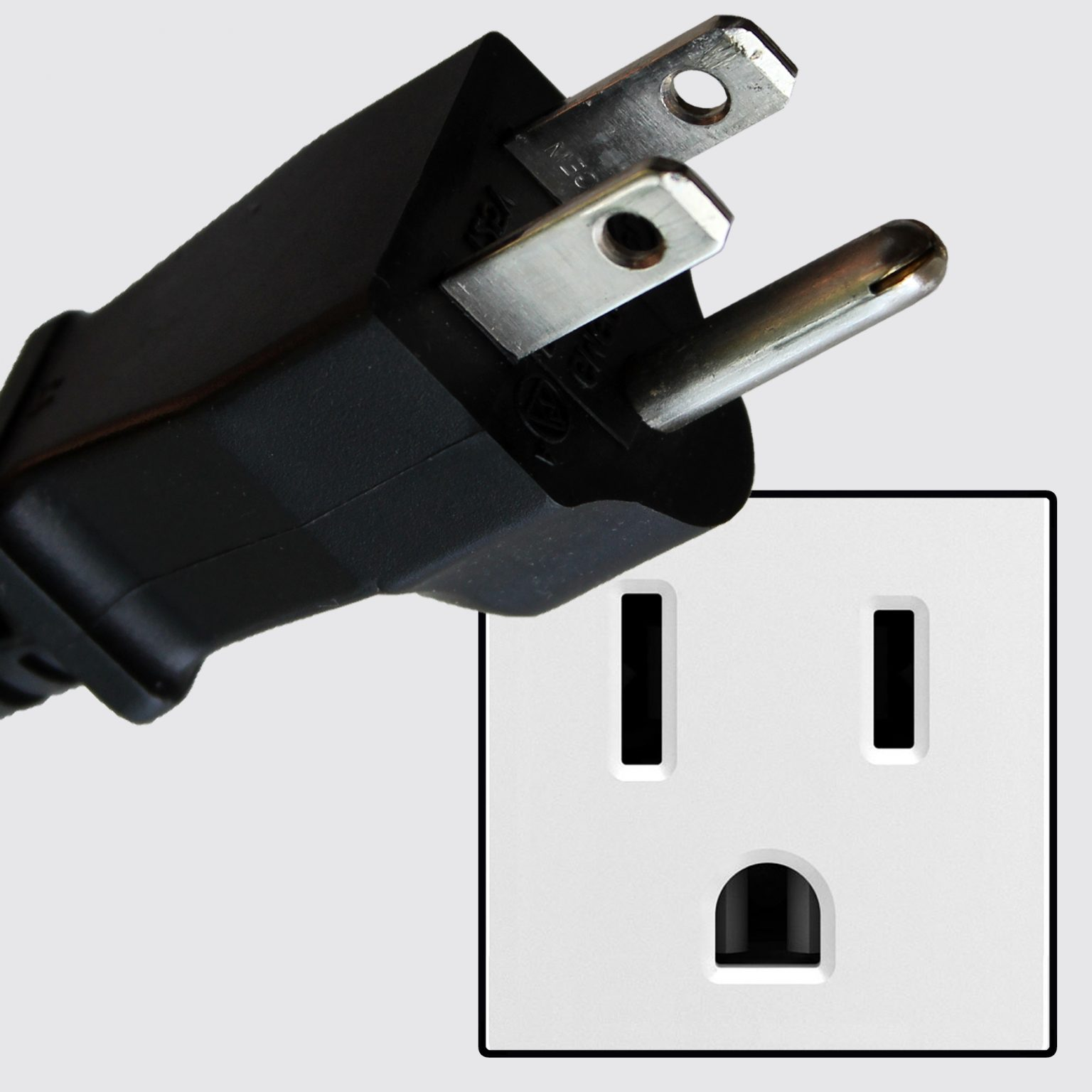
Maybe Italy and Chile have the best idea in terms of slim grounded plugs, although the lack of polarity might be a problem?
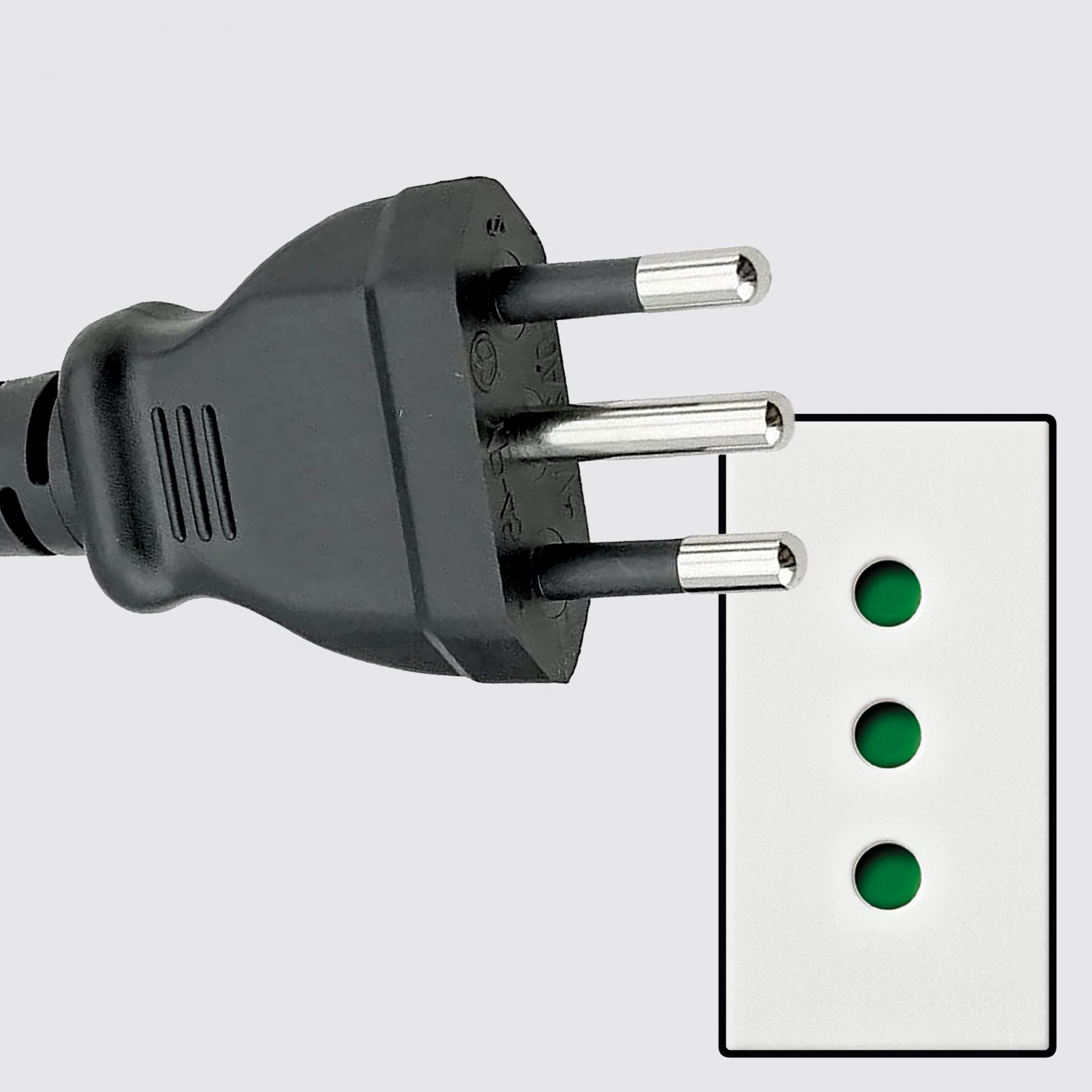
Also, IMO right-angle plugs are often better than straight ones because you can put furniture closer up against them and do so without stressing the cable.
right-angle plugs are often better than straight ones because you can put furniture closer up against them and do so without stressing the cable.
Yeah that is definitely a huge bonus. I’ve taken it for granted.
We’re slowly adopting three pronged Italian/Chilean-type plugs that will be “backwards-compatible” with the EU plugs. I have no clue about polarity or anything like that.
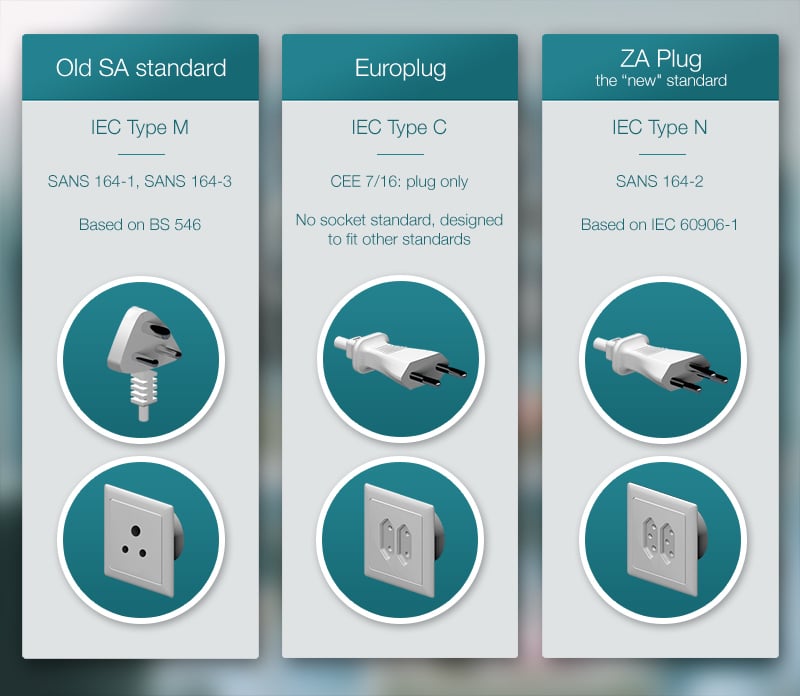
New sockets include em. The original three pronged socket is kind of a hazard. Kids can stick their fingers in there. Not sure how that got approved.
Wait until you step on with bare feet an upturned UK plug. Worse than stepping on Lego
why would the lack of polarity be a problem? the outlets only deliver AC, and everything plugged into them are made for AC.
I gotta admit I don’t entirely understand it either, but people claim it matters. ¯\_ (ツ)_/¯
https://www.physicsforums.com/threads/why-is-the-correct-polarity-important-with-ac.979324/
exciting to stand on
Thanks, I hate it.
Makes sense, American lie voltage (outlets) are 120V. 240V is considered high voltage and isn’t typically fed into residential units. Plugging anything rated for 120V into a 240V outlet is gonna be a bad time, and is why the outlets for high voltage are shaped differently.
I was gonna guess that the switches were too negate so-called vampire power, which is when a truck’s of electricity flows into appliances that are normally off. IMO that trickle is so negligible in a residence that is 6 effectively irrelevant, but that’s just here in the US. I don’t know anything about foreign electrical systems.
240 is used all the time for furnaces, driers, and increasingly EV outlet connections.
It’s just all our “normal” stuff is 120.
I wish our electric kettle outlets were 240. I’m unreasonably jealous that other places in the world can boil water faster!
I think you can have it, but you’d need to spend a pretty penny.
All it would take is calling an electrician to run the appropriate wiring from the place you want the kettle plugged in to you breaker box, connect it to the breaker box with the appropriate breaker, cap off the other end with the appropriate plug (a 240V plug does exist in America), and then buy a kettle capable of receiving the rated voltage and current and splice on the appropriate plug (because I presume you won’t find one sold with that plug).
An extremely expensive way to save maybe three minutes boiling water, but you can do it.
How many devices do you have that don’t have a switch on the device itself?
To turn them on and off.
Fair enough
This is virtually standard in Australia
Depending on who built the house, it’s the standard for a “good” house in Ghana, Nigeria, Zambia and I think Kenya.
It is standard in NZ
deleted by creator
I like them, personally. You don’t have to use them but they are sometimes handy. I just spent 30 seconds feeling around a TV to turn it off only to discover it doesn’t have buttons. Killed it at the wall.
It’s not a deal breaker, in any case. The weird foreign convention I would like to shame is doors that require a key to open from the inside.
I usually see keyed from the inside locks when there is glass in/near the door to prevent someone from breaking the glass, reaching in and unlocking the door.
Can’t that be prevented by safety glass instead? Doors that need a key to open from the inside risk trapping people inside the building.
If a burger is gonna break the glass, a keyed lock isn’t going to deter them. Unless it’s like only a tiny glass window on the door.
If a burger is going to break the glass, it’s either really bad glass or a really bad burger.
I stand by what I said.
I just spent 30 seconds feeling around a TV to turn it off only to discover it doesn’t have buttons.
Ugh. That annoys the shit out of me. Our dog chewed up the TV remote when she was a puppy, but only got to the power button. But since the TV had no physical buttons, we couldn’t turn it on and off anymore until we got a new remote.
I have an old android phone I keep around because it has an IR LED on top and I loaded it with a few free universal remote apps. They all work offline and it’s come in handy so many times.
Some new models also still include ir blasters. Good stuff
The weird foreign convention I would like to shame is doors that require a key to open from the inside.
Huh. Where have you seen those? Seems dangerous.
They’re used where there are windows close enough that, if broken by an intruder, the intruder would be able to operate the lock.
The better solution is, of course, to not use such doors.
The weird foreign convention I would like to shame is doors that require a key to open from the inside
You can’t lock yourself out with those
But you can lock yourself in. During a house fire.
You can lock yourself in with the other type too.
No you can’t. You can lock yourself out, but a typical residential house built to code in North America has a latch handle that always turns from the inside, even when locked, and usually unlocks by doing so to prevent accidental lock-outs. And likewise if the door has a deadbolt, it must have a deadbolt with a handle on the inside. Most other kinds of locks are also easily accessible and removed by hand from the inside. The point is that they can’t require a key from the inside, because if you can’t find the key then you are locked inside and in thick smoke and fire that the key may be impossible to reach. If any egress door requires a key to unlock from the inside it is considered a serious fire hazard and will never pass a code inspection. (Of course, foolish people can still add them later but you can’t prevent stupid and it’s still a fire hazard not to mention impractical)
These types of building code and fire code rules are typically written in blood. People have died because of this.
All house doors/egress doors in Brazil require keys to unlock. BUT (and it’s a big but) most houses here are made of bricks, with ceramic roofs.
It does make sense to have easy-to-escape houses when they are built of flammable materials with an accelerant for a roof.
You can burn to death, though.
Safety, easier to switch things off without unplugging them. Why not have one if it’s more convenient? Not all of them have switches though.
It made a lot more sense when things didn’t have their own power switches but…what does that apply to anymore? How many devices do you own that are powered off exclusively by unplugging it? Why pay for the manufacturing time and material to add a switch if nothing uses it anymore?
There are still times where it’s convenient. I have some display cases with integrated lighting and the inline switches are incoveniently between the case and the wall so its super handy to turn it on and off at the plug.
Being able to turn things off at the plug also reduces standby/phantom power when things are in sleep, which for some devices adds up more energy usage than you’d think.
Sometimes when people go on holiday for two weeks they like to disconnect the electrical items in their house for safety. With switched sockets you can just turn them off instead.
I’m sure I could live just fine without switched sockets, but it’s convenient they are there.
Ah, now all of that makes sense! Thank you!
Fridge, washing machine, dishwasher, television, phone charger, robovac dock, lamps, computer monitor, aquarium pump… I could go on.
It’s not strictly necessary, but it’s a convenience.
Most of those have power buttons and, aside from the charger and vacuum, those things are supposed to stay on.
I meant more things like lamps that you actually turn on and off…And the majority lamps have switches nowadays, I’m not sure why you included it on your list
We’re getting into the weeds a little bit here, but there’s a lot of things that have power buttons that will put the thing into standby, not off. I’ve often done a ‘hard reset’ on my ‘smart’ tv when it starts acting up, just gotta cut the power.
It’s a small convenience, but it’s nice. I’ll happily pay the extra three cents in manufacturing costs for something that lasts decades and may be occasionally mildly helpful.
Kind of off topic, but I’ve just gotta add that the safety shutters over the positive and negative terminals that only open when the ground pin (which is longer than the others on the plug) is inserted up top is brilliant, it basically makes short circuiting impossible. Electrical outlet design is one of the few things I’ll concede the UK does better than the rest of the world.
I too am relatively envious of the UK’s outlet design, I only hate how bulky and foot destroying they are.
I’d like to think Australia has a nice middle ground design to their sockets/plugs without the foot destroying bulk. Still get the shutter variants for bathrooms too.
I like the Australian 90 degree plugs, too. Much slimmer than the UK ones.
Tom Scott has a video all about the UK power outlet plug and socket and it’s an engineering marvel. The switch is just one feature.
The switch isn’t really a a feature of the UK plug, rather just something they seem to have started doing with their sockets.
Well, the design of the plug also implies the design of the socket. I was born in the eighties, and I’ve never seen an electrical socket without a switch, except for the appliance socket used for the cooker, which is behind where you install the appliance - the switch is higher up, above the countertop where it is accessible.
Basic extension trailing sockets don’t, most of the time unless you buy a snazzy one. But it’s by no means a recent development.
Plug and socket obviously go together but I just mean that you could have the switches for any plug, it’s not tied to the plug but just rather what socket plate (or what’s the term) design is adopted. Schuko could have those switches, I think Yanks have them in newer plug plates and so on. It’s just that the UK has adopted (in a standard or just commonly for some other reason) the switches.
Maybe, but with the switches on the sockets, I hardly ever unplug anything at all unless I’m moving it. Why would I?
So pretty much every time something’s unplugged, it’s in my hand or away in a cupboard, never lying on the floor.
the safety shutters over the positive and negative terminals that only open when the ground pin (which is longer than the others on the plug) is inserted up top is brilliant
The US is catching up in that regard, at least, with tamper-resistant (TR) outlets being mandated by the NEC since 2008.
It’s balanced by light switches being outside of the bathroom, which I absolutely hate.
You can have a pull cord in the bathroom or a switch outside, as I understand it
You can’t have standard switch inside?
I’m currently renting an Airbnb where the bathroom fan switch is in the living room, two rooms over
Good for announcing guests that you’re going to take a shit and they’d better shuffle off
As any cautious parent could tell you, these are helpful when the toddler starts sticking things in places where they don’t belong. Such as metal cutlery. In the power sockets.
Don’t toddlers start pressing buttons even earlier? Not sure this alone could protect them
True, but this is at least a little safer
The shutters inside the socket are more effective at preventing Anthony from being stuck in.
I think you meant to write “anything”, but I have to laugh anf think this could be another internet moment like what started “Karen” or “Chad” or “Stan”.
Er… I stand by what I said…
This isn’t the reason.
The switch is more likely to attract a toddlers attention. Some have little red lights even. It would be false sense of security at best. You can get those plastic blank plugs to stop your kid putting a fork in there.
The switch is so, if you kid is being electrocuted by putting their fork in the toaster, you can turn it off at the wall without having to touch the electrified kid.
I present to you my favorite YouTube person:
The GFCI/RCD, a simple but life saving protector:
https://youtu.be/ILBjnZq0n8s?list=PLv0jwu7G_DFU62mIGZNag5vQ0a6tDGBpO
In defense of the Switched Outlet:
Electrical topics playlist:
https://youtube.com/playlist?list=PLv0jwu7G_DFU62mIGZNag5vQ0a6tDGBpO
I could just watch this guy all day lol
I expected Technology Connections or ElectroBOOM, was not disappointed.
One teaches what to do, the other teaches what not to do.
ElectroBOOM keeps me alive sometimes, and Technology Connections told me how to properly use a dishwasher.
A fellow human of great and distinguished taste I see
Great for turning off a device or several devices without having to unplug (e.g. if the sockets are behind a bookcase, this is much more convenient). Not a super common need but when it saves moving furniture it helps. Given that UK switches are tougher to plug in and unplug than most (due to safety features), I prefer using a switch. Also, the switches are cheap and give more options, so may as well!
I rely on one for a light where the switch broke and wasn’t easily replaceable, so being able to fall back on the mains switch meant I can keep using the light.
It’s not about having a switch it’s about having the switch right next to the plug instead of next to the doorway (where it usually is in the US)
I like the integration of the switch, should be standard. I use many switch plug-ins just to avoid stand-by consumption (it really adds up over the year) and to avoid high pitch humming on some devices.
YSK: there’s also remote controls for these switches, very handy
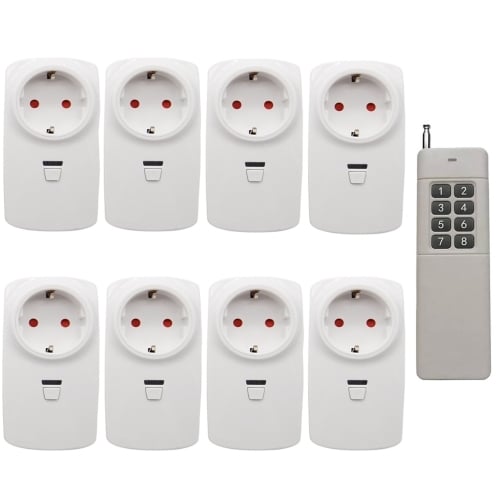
I’m not an electrician, but wouldn’t remote control imply that something still remains on standby? So that it can receive a wake-up signal, if nothing else.
Indeed so but the power draw is very miniscule.
UK household electricity is pretty spicy compared to many other places - it has more safety features as a result. (3 pinned fused plug, socket switches etc)
Isn’t it just 230v 50 Hz like most of the world?
Apparently around 65-70 % of the world population (with access to electricity) has 230v 50 Hz.
How is it more “spicy” than anywhere else in Europe?
A lot of dodgey wiring.
Do they have the wiring on the outside of the houses so it’s easier to repair?
I’ve heard in UK they tend to do such things.No, it’s usually buried in the wall behind the plasterboard. Although it is possible to use surface trunking. It’s quicker and therefore cheaper to use trunking with less making good afterwards

It was a joke on UK putting water pipes on the outside of their houses.
Making them sometimes freeze and burst in the winter, but it’s easier to repair. 😋Well duh, they freeze and burst in winter so they obviously need to be outside for easier repair! Think of the mess they would make if they were inside the walls.
Absolutely, it’s not the UK that are crazy, it’s everybody else.
Hmm the only water pipes I’ve ever seen outside are for the garden hose 🤔
In our defence, most of that is legacy from the post war rebuild (copper shortages etc). The modern regs are comparable or better than a lot of places.
There’s enough of the dodgy stuff around that it needs to be accounted for, but it’s being phased out as new stuff it built or renovated.
The many other places is the US
And Japan, and Canada, and Mexico, and the majority of South America, and a handful of countries in Africa and the Middle East.
I was mainly referring to almost all of the American continent(s), lots of Africa, China and a few other places too. I didn’t think I’d mentioned Europe.
I have been with 110v plenty of times used to wire houses in my youth. Been hit once with 220v knocked me on my ass for 3 days. I stopped being so cavalier after that I wish they had those outlets vs the midevil outlets the US has.
The rest of Europe has 220V as well and they don’t have switches on their outlets.
“so many”?
isn’t it all of them?
No not all of them.
Source, I was born here.
i live in malta, we inherited your plugs and sockets. Never seen one without a switch over here. Til
All of them in the UK.
Being a uk person its cause they can & its also in to building / electric code. Its just a switch that breaks the live leg, stops sparking when plugging in stuff.
Your sockets spark when you plug something in?
I’ve definitely had that happen to me, sort of at random, in the U.S.
But it doesn’t seem to have any effect. It’s not like a gigantic spark and it’s pretty contained.
Oh I’ve never seen that in the US, maybe I just didn’t notice
Laptop power bricks is probably where I see it most. Or if you plug in something with a motor already switched on. Listen for a soft popping noise if you plug in a big power brick.
You’re right, now that I think about it. Laptop power does it more than anything else.
Many, many big power-smoothing capacitors inside those jumping from 0 to 120V in a microsecond, that’s why. The better-smoothed the power supply, the more capacitors and the bigger the sparks tend to be, although some really high quality ones put most of them behind inrush-current limiters to reduce the sparking, but that can also marginally reduce efficiency. High power electronics are always a bit of a tradeoff. The problem is that capacitors charge and discharge almost instantly in most cases, and when empty they act like a short circuit until they’re filled, so they can create some pretty big sparks, even though the actual energy going in is minuscule by any reasonable measurement. It’s almost like a static shock, huge spark, tiny energy.
Some motors will also spark badly when disconnected, but the reason is slightly different. They have a huge electromagnetic field which suddenly fills or collapses and that inductance in the coils can draw a lot of amps on startup and generate some pretty high voltages, more than enough to spark across the gap. Like the capacitors, they are very nearly a short circuit until they start moving.
Ah, this is fantastic. I learned some stuff, thank you.
Home electricity in North America has roughly half the voltage as elsewhere in the world, and double the voltage is double the arcing potential, so that figures.
No, unless something is very wrong. I don’t know if that was maybe a bigger problem with older devices though. I remember being taught to turn the socket off before plugging things in or taking them out when I was a kid
All will if there is a load. Doesn’t matter ac of dc or even load. Plug an ethernet cable in and there will be a spark.
Most of the time the spark is tiny and you need a good lab to measure it though.
Everything you’d want to know about British wiring and my introduction to Tom Scott:
